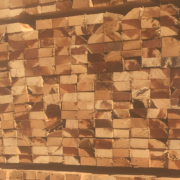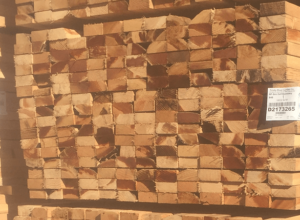Identifying and Mitigating Mold on Wood Pallets

As we pass through the hot summer months in North America, an increasing number of Nature’s Packaging readers are entering search queries regarding pallet mold. Whether you are a pallet supplier, a pallet user, or even as a hobbyist, there are practical steps that can be taken to prevent or mitigate mold. This blog post provides a quick starting point to better understand the problem of mold on wood pallets and the options for managing it.
What is pallet mold and what are the concerns?
Mold (or mould in other English-speaking countries) is a fungus that grows in the form of multicellular filaments.


Mold filaments
Mold spores are found everywhere in the environment, and they are more likely to colonize wood surfaces that have a moisture content greater than 19%.
On wood pallets, mold may produce pigmented spores on the wood surface. They may appear in various colors, while some might not be visible to the naked eye.
There has been an increasing demand for mold-free wood packaging from the food and pharmaceutical sectors in recent years. The primary concern with mold relates to spore transmission. Airborne spores may land on nearby surfaces, potentially contaminating or growing on nearby materials.
Spores may also colonize other adjacent wood packaging or pallets, thereby increasing the extent of the problem. Secondary health concerns include asthma and toxin production. Like other airborne particles, spores can induce asthma. The more spores that are present, the higher is the risk. As one researcher notes, some mold fungi are also capable of producing toxins, but while high levels of toxins can have health effects, the levels produced by fungi on wood tend to be low.
Not all wood discoloration is a concern
Before flagging or rejecting a pallet for mold, consider that the discoloration you see might be something else. By taking the time to understand the different types of stain that can occur in wood, you can avoid wasting time, money, and potential disruption to your supply chain.
For example, bluestain creates black discoloration but does not cause human health concerns. Additional sources of non-harmful discoloration that might be present on pallets include iron stain, brown stain (or zebra stain), natural weathering, and others. NWPCA has a helpful brochure that can be downloaded at this link.
Mold remediation
Although labor-intensive, a simple solution of water with bleach (10 to 1 ratio) or 3% concentration of hydrogen peroxide can remove mold. Scrub or pressure wash clean the affected cants or wood packaging. Proper drying is needed to ensure that the mold does not return.
Mold prevention tips
Mold prevention starts with understanding the recipe that mold requires to flourish. There are four essential ingredients needed. This list includes:
- oxygen,
- adequate temperature,
- a food source (the wood),
- free or liquid water.
The variable most easily controlled is water. By limiting the exposure of wood pallets to moisture, you can mostly avoid mold problems.
Keep stock fresh and remove moldy material.
At the sawmill or pallet manufacturing plant, one expert advises against storing wet lumber in solid piles for no longer than three days, especially in warm conditions.
Create good airflow to accelerate surface drying, and avoid accumulations of older, moldy material. Such lumber can increase the risk of fungi spreading to freshly milled material.
Unload pallets quickly and protect them from the elements.
Pallet users can benefit by thinking of a trailer full of pallets as an incubator. While logistics professionals often rely on trailers for temporary storage, leaving pallets on trailers during warm weather, even for a brief period, can quickly turn into an unintended science experiment.
Also, avoid staging pallets outside in moist conditions. If pallets do become wet, dry them immediately.
Store pallets in a dry, well-lit, and ventilated location.
Do not store pallets in a far dark corner of your building. Look for a dry area that is well lit and ventilated. For stringer pallets, leave a space on the stringer side of the stacks to ensure good airflow.
For the same reason, orient the end openings in the direction of air movement. Also, elevating pallet stacks at least 6 or 8 inches above the floor helps prevent pallets from coming into contact with water puddles.
Chemical treatment for mold prevention might be an option.
Several registered chemicals can be applied to prevent mold, subject to those treatments being permitted for your application. A dialogue between pallet suppliers, customers and other supply chain stakeholders can pinpoint the best option for a particular use case.
Do not rely on ISPM 15 heat treatment as a preventive measure.
One common misunderstanding is that heat treatment can be an effective course of action to prevent mold. This belief is not valid. The heat treatment of wood packaging is undertaken to kill wood born insects.
While heat treatment can kill surface mold already present during the process, it does not prevent the recolonization of mold after treatment. It is true that when kiln-dried lumber is used for pallets, the low moisture content of the wood does help prevent the colonization of mold, but only if the pallets continue to be kept dry.
The bottom line is that keeping your wood pallets and packaging at 19% moisture content or lower can help prevent mold. Rotating stock, attention to unloading pallets from trailers quickly, ensuring adequate airflow in a well-lit storage location, and removing any moldy material can all help. Consider chemical treatments, if permitted in your supply chain, to increase your level of protection. Attention to keeping pallets dry in your material handling operations can make a critical difference.




